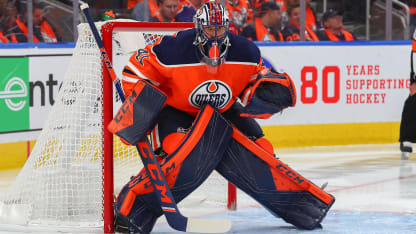The narrative regarding goalies switching teams is often about the need to build new relationships within the locker room, establish communication and trust with a new set of defensemen, and adapt to a new playing system. Yet there is no relationship more valuable than the one that must be built, in short order, with a new goaltending coach.
"I think it's more important than all those other things," said Edmonton Oilers goaltending coach Dustin Schwartz, who is building a relationship with new goalie Mike Smith after doing the same last season with Mikko Koskinen. Smith signed a one-year contract with the Oilers on July 1.
"Systems within hockey are all relatively similar, guys have seen them, guys have been a part of them, you're not reinventing the wheel with systems," Schwartz said. "Obviously, there's an adjustment period for players to establish relationships amongst themselves, but in the position we're in with our two goaltenders, constantly working as a group of three, that relationship is really important. There's a bunch of different things that go into that, and a big one is respect."
The same is true when a new goaltending coach is hired. Craig Anderson has been in the NHL for 17 seasons but did not start working with Pierre Groulx until 2016-17 when Proulx became the Ottawa Senators goaltending coach. Anderson quickly meshed with Proulx, making his day-to-day hockey life easier.
"It comes down the comfort level, and I think the company that is telling you what to do makes it easier to do it," said Anderson, who is in his 10th season with the Senators. "If it wasn't for PG, his personality, the way we jell together, the way he understands how I operate, I wouldn't enjoy it as much and that would take away from the passion.
"I mean, I've tried numerous things that don't work, and PG is like, 'All right, it doesn't work for you, let's find something else that works here.' You can get other goalie coaches that are like, 'No, it's got to be this way,' and eventually, if you can't do it their way, they just quit on you. That's just not conducive to getting better."

